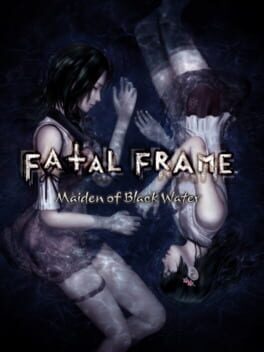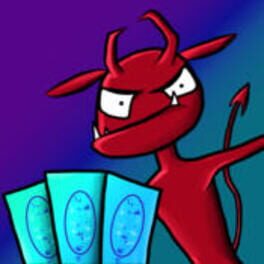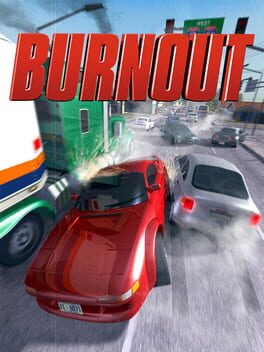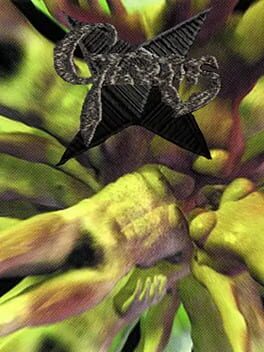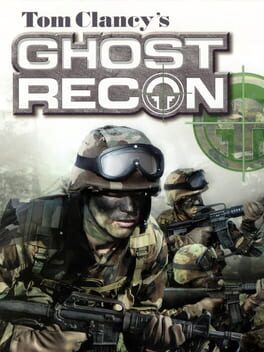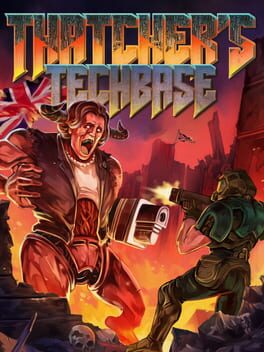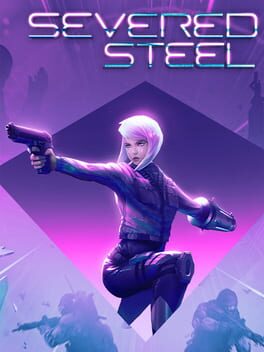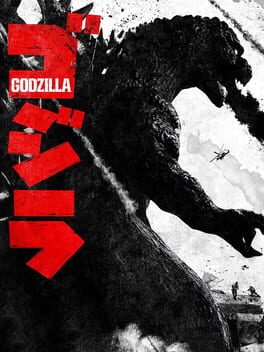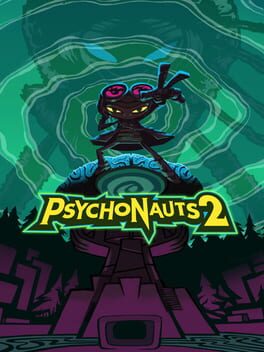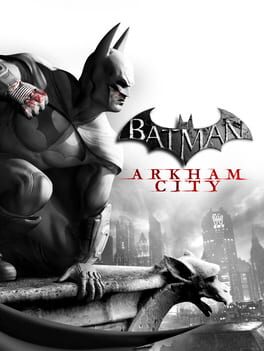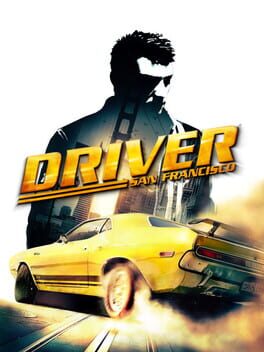I assume we all know the basics of Fatal frame, so I skip the mechanical description
________
Body vs Soul. the camera captures both
The most linear Fatal Frame and at the same time the most sensitive to the global image, with a hyperkinetic camera both in navigation (3rd) and combat (1st). The most outstanding Texture of the series: The static, the video, The skin, the tissues , the liquids on them, all creates an image of contained lust subjected to the horror of those who associate sex and death. A formally cleaner Silent Hill
A bit voyeuristic too, suggesting forbidden relationships between siblings and offering mechanics that show us moments of death, murder or suicide as a reward after capturing a ghost with the camera.
Although many of my favorite works have their origin in Japan, I feel that it is a country whose art and mythopoeia are sometimes based more on texture than on deeper formal personality, especially in music and video games, and it is funny that you find in Maiden of the black water a kind of allegory of this: Approach and contemplate bodies that, human or ghost, seem drained of emotional personality and ooze aesthetics.
And again; the texture, the image, that sticky friction of some old Koei Tecmo games, that obsession in the production that Makoto Shibata and his team led to record game scenes on crumpled videotapes to achieve worn VHS effects, paranormal document.
I don't know, I just like this game.
________
Body vs Soul. the camera captures both
The most linear Fatal Frame and at the same time the most sensitive to the global image, with a hyperkinetic camera both in navigation (3rd) and combat (1st). The most outstanding Texture of the series: The static, the video, The skin, the tissues , the liquids on them, all creates an image of contained lust subjected to the horror of those who associate sex and death. A formally cleaner Silent Hill
A bit voyeuristic too, suggesting forbidden relationships between siblings and offering mechanics that show us moments of death, murder or suicide as a reward after capturing a ghost with the camera.
Although many of my favorite works have their origin in Japan, I feel that it is a country whose art and mythopoeia are sometimes based more on texture than on deeper formal personality, especially in music and video games, and it is funny that you find in Maiden of the black water a kind of allegory of this: Approach and contemplate bodies that, human or ghost, seem drained of emotional personality and ooze aesthetics.
And again; the texture, the image, that sticky friction of some old Koei Tecmo games, that obsession in the production that Makoto Shibata and his team led to record game scenes on crumpled videotapes to achieve worn VHS effects, paranormal document.
I don't know, I just like this game.
2014
like an effervescent song with a rough texture. The kind of game you can break right from the start (i enjoy breaking games). There is a reason why so many developers hold this game in such high esteem, and it is that it is so creative with the concept of "card game" through a small board that is discovered little by little transports the player to a fast and deep campaign , at the same time is demanding in its learning and mechanical approach, perfect for short or long games. I seem to be selling it as a consumer product or a board game out of the pile, but it is so immediate and satisfying that you just need to try it out for yourself.
The presentation is not the most attractive, perhaps because the drawings were made by the daughter of the dev, Peter Whalen, but for me it is a point in favor (wat)
The presentation is not the most attractive, perhaps because the drawings were made by the daughter of the dev, Peter Whalen, but for me it is a point in favor (wat)
2021
I don't want to sound like a moralist or exercise armchair activism, but how long can you continue defending a game that has ended the careers of so many workers? So many devs abused while Nintendo and Mercury Steam get the accolades for creating another continuity metroid.
In case you don't know, mercury steam did not credit several devs who were dismissed improperly or were forced to leave the project due to force majeure, such as poor mental health or, I don't know, THE FUCKING PANDEMIC.
There is plenty of information on the internet about this and, hey, probably several of my favorite games were developed through Overworking, unfortunately in Japan it is common and surely, there will be similar or worse cases than that of metroid dread, but at a time when The fact that social conscience and mental health is such an important and controversial issue, I find it inconceivable that so many praises are given to a game perpetrated under the worst business practices I have seen in years, it is pure meritocracy.
Please, if you love a game, its perfectly okay, but do not defend it that if has been created under bad praxix and has screwed up the careers of some of its devs, on the contrary. Do not stain anyone's memory
In case you don't know, mercury steam did not credit several devs who were dismissed improperly or were forced to leave the project due to force majeure, such as poor mental health or, I don't know, THE FUCKING PANDEMIC.
There is plenty of information on the internet about this and, hey, probably several of my favorite games were developed through Overworking, unfortunately in Japan it is common and surely, there will be similar or worse cases than that of metroid dread, but at a time when The fact that social conscience and mental health is such an important and controversial issue, I find it inconceivable that so many praises are given to a game perpetrated under the worst business practices I have seen in years, it is pure meritocracy.
Please, if you love a game, its perfectly okay, but do not defend it that if has been created under bad praxix and has screwed up the careers of some of its devs, on the contrary. Do not stain anyone's memory
I walk into the castle of horrors and nothing is intimidating.
I am in the future, in a time of resurgence. there is tradition, but also new blood. everything is recognizable, linear corridors, rectangular rooms and architecture by pieces, disengaged, okay I guess, there are no rules in this space. But wait, there are laws, those that manage the danger and therefore the challenge. shit, there are levels, a lot of weapons, was it in the future? This feels the same as it did in the 90s.
the premise itself is contradictory; Aria of Sorrow is set in 2035 (I think lol) but the structure and direction remains unchanged, frozen and subjected to SoTN, the power of dominance is impressive at first, but many souls end up becoming projectile weapons or typical metroidvania tools, and that's fine, it's one more resource, but it is a shame to know that it is such an important element in this installment.
There are so many mobility options and so little space to move around here, so many weapons, so many resources and everything feels trivial because of something so harmless to some people like the level system, why is there a level system? Why so many tools and that gigantic map if what rules the world is arithmetic?
______________
AoS has a great charisma, but not that much
I am in the future, in a time of resurgence. there is tradition, but also new blood. everything is recognizable, linear corridors, rectangular rooms and architecture by pieces, disengaged, okay I guess, there are no rules in this space. But wait, there are laws, those that manage the danger and therefore the challenge. shit, there are levels, a lot of weapons, was it in the future? This feels the same as it did in the 90s.
the premise itself is contradictory; Aria of Sorrow is set in 2035 (I think lol) but the structure and direction remains unchanged, frozen and subjected to SoTN, the power of dominance is impressive at first, but many souls end up becoming projectile weapons or typical metroidvania tools, and that's fine, it's one more resource, but it is a shame to know that it is such an important element in this installment.
There are so many mobility options and so little space to move around here, so many weapons, so many resources and everything feels trivial because of something so harmless to some people like the level system, why is there a level system? Why so many tools and that gigantic map if what rules the world is arithmetic?
______________
AoS has a great charisma, but not that much
2001
Curves matter less than traffic, I don't want to scratch my Red shiny Car.
driving at high speed through the traffic of C'était a rendez-vous is the spark that inspired a necessary aesthetic change, the enemy is the environment. It is no longer valid just to be fast, you have to have mischief. the first The Need for speed included traffic and police who fined you for speeding, but the aesthetics of the outlaw in a sports car was somewhat poor since nothing with enough force encouraged me to drive against traffic. Burnout rewards risk with its boost bar, a turbo that is only refilled by performing risky maneuvers, and here everything happens at the same time, it is a mashup of several driving games. You participate in races you have a route to follow, but its design does not resemble a competition track, and if it does, the suffocating presence of traffic reconfigures your route by force while offering a feeling of flexibility, passing at full speed between two cars that drive in parallel, get from behind a truck to an avenue in the opposite direction in a matter of seconds while overtaking a rival who crashes into a van, reach an alley where there are no cars but you must skid to avoid colliding with the corners ... god, the intensity.
this game has the effect The Fast and the Furious (the fourth); We stopped focusing on cars, and concentrated on creating action with those cars.
the bad thing: it's scarce. The superflexibility of the vehicles needs calibration, the slightest friction of the car with the traffic causes a beastly crash that placed us in a ranking of shame, and this would be great, I like it as a concept, but the chassis and the reward oscillate too much, it is very binary at times, and it's a shame, because ironically accidents are the best of Burnout
__________________
Win your opponents by being faster on a closed track;
the aesthetics of the competition. That's what most racing games were inspired by. It makes sense, after all, video games have intrinsic sports qualities, the aesthetics of motorsport fits well with simulation or arcade, but curiously and probably due to technical limitations, much attention was never paid to the aesthetics of sponsor motorsport , pits (maybe?), the chassis, suspension, tires, fuel and telemetry until the arrival of games like Gran Turismo
----------------------------------------------------------------------------
I think that the main attraction of videogames from the mid-90s to the late 2000s was to wrap the player through a more complex 3d space, the production was higher and more curious. Gaming began to be cinematic, but most games still did not have cinematographic language as such, rather they were inspired by the aesthetics of cinema in a more precise way (perhaps sick), or at least that is the feeling I have taking a look at the racing genre in particular.
driving at high speed through the traffic of C'était a rendez-vous is the spark that inspired a necessary aesthetic change, the enemy is the environment. It is no longer valid just to be fast, you have to have mischief. the first The Need for speed included traffic and police who fined you for speeding, but the aesthetics of the outlaw in a sports car was somewhat poor since nothing with enough force encouraged me to drive against traffic. Burnout rewards risk with its boost bar, a turbo that is only refilled by performing risky maneuvers, and here everything happens at the same time, it is a mashup of several driving games. You participate in races you have a route to follow, but its design does not resemble a competition track, and if it does, the suffocating presence of traffic reconfigures your route by force while offering a feeling of flexibility, passing at full speed between two cars that drive in parallel, get from behind a truck to an avenue in the opposite direction in a matter of seconds while overtaking a rival who crashes into a van, reach an alley where there are no cars but you must skid to avoid colliding with the corners ... god, the intensity.
this game has the effect The Fast and the Furious (the fourth); We stopped focusing on cars, and concentrated on creating action with those cars.
the bad thing: it's scarce. The superflexibility of the vehicles needs calibration, the slightest friction of the car with the traffic causes a beastly crash that placed us in a ranking of shame, and this would be great, I like it as a concept, but the chassis and the reward oscillate too much, it is very binary at times, and it's a shame, because ironically accidents are the best of Burnout
__________________
Win your opponents by being faster on a closed track;
the aesthetics of the competition. That's what most racing games were inspired by. It makes sense, after all, video games have intrinsic sports qualities, the aesthetics of motorsport fits well with simulation or arcade, but curiously and probably due to technical limitations, much attention was never paid to the aesthetics of sponsor motorsport , pits (maybe?), the chassis, suspension, tires, fuel and telemetry until the arrival of games like Gran Turismo
----------------------------------------------------------------------------
I think that the main attraction of videogames from the mid-90s to the late 2000s was to wrap the player through a more complex 3d space, the production was higher and more curious. Gaming began to be cinematic, but most games still did not have cinematographic language as such, rather they were inspired by the aesthetics of cinema in a more precise way (perhaps sick), or at least that is the feeling I have taking a look at the racing genre in particular.
Okey ppl, this translation needs an english version, and stils a bit rough tho, with some errors , but exists
http://www.romhacking.net/translations/6321/
http://www.romhacking.net/translations/6321/
The Russo-Georgian War was predicted by this game
This thing still leaves me dizzy, so expect awful thoughs.
I started replaying games from the 2000s last year and oh boy I was little prepared for it, the military propaganda and the crazy historical revision seem to be synonymous with any shooter that does not have a fancyful background. More or less a month after the 9 / 11 comes this ghost recon, taking seriously the narrative premise that in a future 2008 an ultra-nationalist group has seized power with plans to rebuild the Soviet Union. In 2008. in a game from 2001. Of course the glorious United States of America with the help of NATO prepare to avoid the resurrection of evil through breaches similar to those in the first Splinter Cell, but here is the catch: at an interactive level nothing sells soldiers as supermen capable of everything, nothing similar to those sequences of Medal of honor where we, a lone ranger, resist waves of, I don't know, enraged Japanese soldiers, here, a single round can permanently kill any member of the player's team , meaning that knowing the map and terrain and carefully considering each action is key to keeping Ghosts alive. In that sense, Ghost Recon dignifies, with hardly any script or interruptions, the approach and military action (I can't believe I'm writing this) although at the same time it positions the player as a complete god, being able to take control over any member of the squad at any time while you manage the rest through a fairly detailed in-game map, which creates critical distance between the player and the Ghosts. Maybe embodying a single soldier would have solved the problem, maybe it would have brought others to the table, but for me, going through so many soldiers through the game makes the attempt to dignify the efforts of the military by distancing them from the superhuman characterization that usually seeing oneself in video games like a lost of potential, and an interactive approach where I, as a player, return to being a divine entity, does not help either.I understand that back in 2001 this was an almost revolutionary idea, I understand why the game is how it is, and in theory it should have worked.
This thing still leaves me dizzy, so expect awful thoughs.
I started replaying games from the 2000s last year and oh boy I was little prepared for it, the military propaganda and the crazy historical revision seem to be synonymous with any shooter that does not have a fancyful background. More or less a month after the 9 / 11 comes this ghost recon, taking seriously the narrative premise that in a future 2008 an ultra-nationalist group has seized power with plans to rebuild the Soviet Union. In 2008. in a game from 2001. Of course the glorious United States of America with the help of NATO prepare to avoid the resurrection of evil through breaches similar to those in the first Splinter Cell, but here is the catch: at an interactive level nothing sells soldiers as supermen capable of everything, nothing similar to those sequences of Medal of honor where we, a lone ranger, resist waves of, I don't know, enraged Japanese soldiers, here, a single round can permanently kill any member of the player's team , meaning that knowing the map and terrain and carefully considering each action is key to keeping Ghosts alive. In that sense, Ghost Recon dignifies, with hardly any script or interruptions, the approach and military action (I can't believe I'm writing this) although at the same time it positions the player as a complete god, being able to take control over any member of the squad at any time while you manage the rest through a fairly detailed in-game map, which creates critical distance between the player and the Ghosts. Maybe embodying a single soldier would have solved the problem, maybe it would have brought others to the table, but for me, going through so many soldiers through the game makes the attempt to dignify the efforts of the military by distancing them from the superhuman characterization that usually seeing oneself in video games like a lost of potential, and an interactive approach where I, as a player, return to being a divine entity, does not help either.I understand that back in 2001 this was an almost revolutionary idea, I understand why the game is how it is, and in theory it should have worked.
2021
Shooting Thatcher with a shotgun directly in her face is a concept that had to be realized in real life. jokes aside (jokes, right) the concept of punk theme is carried throughout the game; from objects to progress due to excessive use of switches and super labyrinthine architecture and somewhat reduced, or so I interpret, but from a certain point, momentum is lost and the climax is not as satisfactory as its stimulating thematic premise, it is a too bad, because this Wad could be tremendous.
-_______________________________________________________
Sometimes I feel sorry for the little that is explored the ability to recreate historical moments and places in video games, the ability to immediately transport to an environment of the past through digital architecture is usually reduced to a masturbatory revisionism, made for the player . be a cowboy, a viking, be the weeb representation of a samurai, explore the forgotten city. explore the past that did not exist.
I am not making a real criticism here, I think that the reinterpretation of the first God of War or Spartan Total Warrior can be interesting as a tragic fantasy, more visceral and tactile, or explore alternative mythologies, where the Nazis dominate the world ... or where samurai are not a folk lie (lol).
Of course there are games where you can explore the past in a quasi-faithful way, but the pop example that comes to mind is Shenmue, and that one didn't even recreate the past!
-_______________________________________________________
Sometimes I feel sorry for the little that is explored the ability to recreate historical moments and places in video games, the ability to immediately transport to an environment of the past through digital architecture is usually reduced to a masturbatory revisionism, made for the player . be a cowboy, a viking, be the weeb representation of a samurai, explore the forgotten city. explore the past that did not exist.
I am not making a real criticism here, I think that the reinterpretation of the first God of War or Spartan Total Warrior can be interesting as a tragic fantasy, more visceral and tactile, or explore alternative mythologies, where the Nazis dominate the world ... or where samurai are not a folk lie (lol).
Of course there are games where you can explore the past in a quasi-faithful way, but the pop example that comes to mind is Shenmue, and that one didn't even recreate the past!
2021
La verdadera originalidad es comerse una wild banana
2014
https://www.youtube.com/watch?v=TYIOVBBxsNA
This is the Bootleg of bootlegs experience .
In an medium where programming a simple door can be hell, diorama-shaped sets can be the most effective alternative to those interior spaces where furniture and physical objects need to function as real places, rather simulation.
Suitmation through controller and destructible sets. architecture at the mercy of the Kaijū, without too many nuances, but with some weight
too hard? I don't want to sound uncharitable, but I doubt it's that difficult to make a good Godzilla game.
If you want a good Tokusatsu staging in video game form, play Uchuu Keiji Tamashii: The Space Sheriff Spirits or Ultraman 2004 instead.
And if you are looking for a monstrous exercise of destructible spaces ,with pleasure, play Hulk Ultimate destruction
Okay maybe not the best example
This is the Bootleg of bootlegs experience .
In an medium where programming a simple door can be hell, diorama-shaped sets can be the most effective alternative to those interior spaces where furniture and physical objects need to function as real places, rather simulation.
Suitmation through controller and destructible sets. architecture at the mercy of the Kaijū, without too many nuances, but with some weight
too hard? I don't want to sound uncharitable, but I doubt it's that difficult to make a good Godzilla game.
If you want a good Tokusatsu staging in video game form, play Uchuu Keiji Tamashii: The Space Sheriff Spirits or Ultraman 2004 instead.
And if you are looking for a monstrous exercise of destructible spaces ,with pleasure, play Hulk Ultimate destruction
Okay maybe not the best example
the music drowned out by the sound of bullets.
the war of styles for the war of covers.
For some reason, several rappers have shown to have a fairly strong relationship with video games, or maybe it is the rappers' own public that has that relationship and ends up joining both things, I don't know.
def jam icon or wu tang clan shaolin style are fighting games that got a more violent fantasy, a collage of martial arts and Asian cultures mixed with black culture, and it makes sense to me.
I am not going to stop to explain the connection among some hip hop or bboying artists, (maybe this movie can help as an entry point https://www.youtube.com/watch?v=bqW15TUzPc8 )but their relationship with martial arts cinema was key to developing styles and establishing schools and competitions,
Now then, what is this game? Why is the 50 cent and the ultra militarized G-unit shooting soldiers in the Middle East? Why does everything look like anti-jihadist weapons propaganda?
It can be very interesting, but I don't get it.
the war of styles for the war of covers.
For some reason, several rappers have shown to have a fairly strong relationship with video games, or maybe it is the rappers' own public that has that relationship and ends up joining both things, I don't know.
def jam icon or wu tang clan shaolin style are fighting games that got a more violent fantasy, a collage of martial arts and Asian cultures mixed with black culture, and it makes sense to me.
I am not going to stop to explain the connection among some hip hop or bboying artists, (maybe this movie can help as an entry point https://www.youtube.com/watch?v=bqW15TUzPc8 )but their relationship with martial arts cinema was key to developing styles and establishing schools and competitions,
Now then, what is this game? Why is the 50 cent and the ultra militarized G-unit shooting soldiers in the Middle East? Why does everything look like anti-jihadist weapons propaganda?
It can be very interesting, but I don't get it.
2021
Pyschonauts was a very charitable and warm game in his treatment of mental health. Far from drawing a world divided into healthy and sick, sane and crazy, his characters were built around psychiatric diagnoses, but they were presented as people with problems and fears who needed help to overcome them; suicidal tendencies, lewd behavior, amnesia, verbal incontinence ... or even aquaphobia, which is also presented as an excuse for the inability to swim in-game. an extensive field of traits and behaviors that were treated with humor, but at the same time with more respect than what real psychiatry would treat these symptoms, since it depends on the situation, they would be classified as "pathological", but mental illness is constructed for reasons beyond us, and can be deconstructed.
Psychonauts 2 takes the ending of the first game after Raz himself resolved his own traumas and learning to offer real help to people. It is sad to see that this sequel is a step back in the interactive, because navigating minds is an even more automated process and it formally feels conservative. the peculiarities outside the playable nucleus that appeared in the first psychonauts such as the strategy game against "napoleon", or the adventure game to solve the mystery of the milkman gave each mind a playable and thematic personality (level), and here they are barely present since most worlds are resolved through a mental power as a key to advance, a step back if you ask me.
However, the environmental narrative endows the minds-worlds that we visit with epic and intimacy in equal measure; an architecturally giant and twisted post office, the misivas are actually love letters and newspaper clippings recounting the fall of a country is the scene that personifies the loss of the war, and at the center of it all, a brain with a splinter stuck in, a piece of mirror in which Ford Cruller can no longer be seen
_____________________________________________________
Level design as a representation of the mind, architecture as a personification of desires, traumas and regrets
For me, the most special thing about Psychonauts was its excellence in using social conventions and applying them to its mechanics to form platformer game design elements, conventional, formally contemporary (classic these days), safe, but unexpectedly readable and expressive outside of how video games often use these social conventions.
In gaming, Mario, a short plumber who skilfully performs stunts on abstract architectures, or Sly Cooper, an anthropomorphic thief raccoon who can't swim (what the fridge !?) are perfectly valid narrative constructs, but outside the validation of his own environment and the bizarre internal logic of their platform worlds, neither makes much sense While most platformers from the early 2000s fought in this wave called "mascot platformers" re-adapting collect-a-thon structures, psychonauts chose to build a more cohesive diegesis, with more human and narrative-driven concerns.
The only thing that prevents me from recognizing Psychonauts 2 as a masterpiece, is its playable conservatism, justified, yes, but excessive
Psychonauts 2 takes the ending of the first game after Raz himself resolved his own traumas and learning to offer real help to people. It is sad to see that this sequel is a step back in the interactive, because navigating minds is an even more automated process and it formally feels conservative. the peculiarities outside the playable nucleus that appeared in the first psychonauts such as the strategy game against "napoleon", or the adventure game to solve the mystery of the milkman gave each mind a playable and thematic personality (level), and here they are barely present since most worlds are resolved through a mental power as a key to advance, a step back if you ask me.
However, the environmental narrative endows the minds-worlds that we visit with epic and intimacy in equal measure; an architecturally giant and twisted post office, the misivas are actually love letters and newspaper clippings recounting the fall of a country is the scene that personifies the loss of the war, and at the center of it all, a brain with a splinter stuck in, a piece of mirror in which Ford Cruller can no longer be seen
_____________________________________________________
Level design as a representation of the mind, architecture as a personification of desires, traumas and regrets
For me, the most special thing about Psychonauts was its excellence in using social conventions and applying them to its mechanics to form platformer game design elements, conventional, formally contemporary (classic these days), safe, but unexpectedly readable and expressive outside of how video games often use these social conventions.
In gaming, Mario, a short plumber who skilfully performs stunts on abstract architectures, or Sly Cooper, an anthropomorphic thief raccoon who can't swim (what the fridge !?) are perfectly valid narrative constructs, but outside the validation of his own environment and the bizarre internal logic of their platform worlds, neither makes much sense While most platformers from the early 2000s fought in this wave called "mascot platformers" re-adapting collect-a-thon structures, psychonauts chose to build a more cohesive diegesis, with more human and narrative-driven concerns.
The only thing that prevents me from recognizing Psychonauts 2 as a masterpiece, is its playable conservatism, justified, yes, but excessive
2018
The genesis shooter and dungeon crawler stitched with talent and love.
And then you get to level 4.
and then you die.
and then you go back to the title screen.
oh my god, the rogue-like shit it all
This twisted craft of levels did not need a rogue-like approach, since the construction of the video game itself, in theory, should stand on its own
And then you get to level 4.
and then you die.
and then you go back to the title screen.
oh my god, the rogue-like shit it all
This twisted craft of levels did not need a rogue-like approach, since the construction of the video game itself, in theory, should stand on its own
2011
80% of action video games make you feel like a superhero, from stunt plumbers to teenage girls with boomerangs (Kya) or robber raccoons who operate M: I style, so the "feel like superhero" thing is
somewhat innocuous words for me.
We all know that the poor sociocultural conception of video games relegates superhero licenses to being embedded in the most obvious ways, such as platforms or beat em ups, always losing an important part along the way of what makes them special , superpowers or politics, and fact is that arkham city is not that different in substance. Asylum was a hybrid of melee combat, stealth and puzzles, in a relatively controlled environment that was explored in a monitored way through multifunctional gadgets that served as a key, not unlike a contemporary production of Nintendo or Ubisoft.
With a setting on the way between the comic of the long halloween and John Carpenter's escape from new york, rocksteady packages the most recognizable aesthetic of batman in the pop scene and, as did the animated series, it translates it into modern pop video game language. but although the result has charm, and doesn't seem to want to bloat with hours of content, does not evade some bad avenues of the AAA scene
This is the batman for a new generation, adapts the character without complexities or obstacles to a language that until 2011, never found a way to do it properly. at the same time, it is an x-ray of modern video games
_________________________________________________________
what’s missing from contemporary video Games culture? I would say it is integrity, a lot if we talk about pop video games of the 2010s. Maybe it was the fault of the Great Recession or maybe it was the increase in costs in the productions of the HD era? The thing is that little by little we begin to demand content for content, if bigger, prettier, for more hours, the better. The next we already know
somewhat innocuous words for me.
We all know that the poor sociocultural conception of video games relegates superhero licenses to being embedded in the most obvious ways, such as platforms or beat em ups, always losing an important part along the way of what makes them special , superpowers or politics, and fact is that arkham city is not that different in substance. Asylum was a hybrid of melee combat, stealth and puzzles, in a relatively controlled environment that was explored in a monitored way through multifunctional gadgets that served as a key, not unlike a contemporary production of Nintendo or Ubisoft.
With a setting on the way between the comic of the long halloween and John Carpenter's escape from new york, rocksteady packages the most recognizable aesthetic of batman in the pop scene and, as did the animated series, it translates it into modern pop video game language. but although the result has charm, and doesn't seem to want to bloat with hours of content, does not evade some bad avenues of the AAA scene
This is the batman for a new generation, adapts the character without complexities or obstacles to a language that until 2011, never found a way to do it properly. at the same time, it is an x-ray of modern video games
_________________________________________________________
what’s missing from contemporary video Games culture? I would say it is integrity, a lot if we talk about pop video games of the 2010s. Maybe it was the fault of the Great Recession or maybe it was the increase in costs in the productions of the HD era? The thing is that little by little we begin to demand content for content, if bigger, prettier, for more hours, the better. The next we already know
“Nothing behind me, everything ahead of me, as is ever so on the road.”
― Jack Kerouac, On the Road
more like "DRIVERS" because although the main police drama revolves around a single protagonist, the truth is that thanks to a diegetically justified supernatural mechanics we will be able to possess any driver in the city and inhabit his vehicle with a single button, like a specter , a creative multi-level approach to changing vehicles that is often seen as it avoids the process of stopping / lowering and raising / starting a car, you only change cars while driving, simple pleasant and fast, but you also enter for a short time in the lives of those drivers; Maybe a rich mother who just bought her daughter a car, an engineer lamenting being an engineer with his brother-in-law, a kid training for a driver's license, a couple of cops on patrol, two Japanese brothers involved in a series of races illegal ... whatever you can think of, 150 characters (or something like that, dunno) in any case, the writing leads to very funny, imaginative and varied micro situations.
"sure, why not ?,"
It is a constant thought within the game, but always focused on movement, in contrast to other racers that look like high-end car porn, Driver: San Francisco is motion, and for the first time in a long time, I get excited driving, drifting alleys and I choreographed in the opposite direction, I no longer walk and just fly. i am true to the name "Driver.
Couple of thougths:
The world as a driving track and challenges has been explored on many occasions, but it has never been completely justified diegetically, nor has traffic been given so much importance as inhabitants. It is curious because when reinterpreting the world through a vehicle, perhaps giving importance to traffic as something more than fluctuating obstacles would be a cool idea.
Throughout the 20th century, San Francisco became synonymous with cultural experimentation and alternative thinking and the creativity with which this Driver takes the formal elements of open world driving games perfectly matches the description of this city.
― Jack Kerouac, On the Road
more like "DRIVERS" because although the main police drama revolves around a single protagonist, the truth is that thanks to a diegetically justified supernatural mechanics we will be able to possess any driver in the city and inhabit his vehicle with a single button, like a specter , a creative multi-level approach to changing vehicles that is often seen as it avoids the process of stopping / lowering and raising / starting a car, you only change cars while driving, simple pleasant and fast, but you also enter for a short time in the lives of those drivers; Maybe a rich mother who just bought her daughter a car, an engineer lamenting being an engineer with his brother-in-law, a kid training for a driver's license, a couple of cops on patrol, two Japanese brothers involved in a series of races illegal ... whatever you can think of, 150 characters (or something like that, dunno) in any case, the writing leads to very funny, imaginative and varied micro situations.
"sure, why not ?,"
It is a constant thought within the game, but always focused on movement, in contrast to other racers that look like high-end car porn, Driver: San Francisco is motion, and for the first time in a long time, I get excited driving, drifting alleys and I choreographed in the opposite direction, I no longer walk and just fly. i am true to the name "Driver.
Couple of thougths:
The world as a driving track and challenges has been explored on many occasions, but it has never been completely justified diegetically, nor has traffic been given so much importance as inhabitants. It is curious because when reinterpreting the world through a vehicle, perhaps giving importance to traffic as something more than fluctuating obstacles would be a cool idea.
Throughout the 20th century, San Francisco became synonymous with cultural experimentation and alternative thinking and the creativity with which this Driver takes the formal elements of open world driving games perfectly matches the description of this city.
